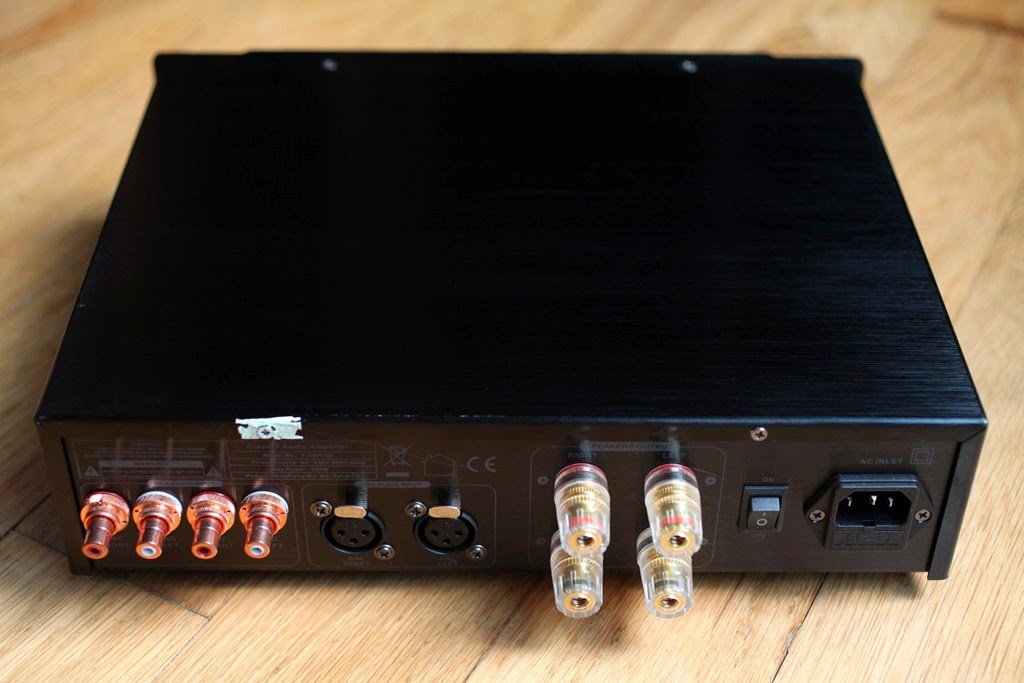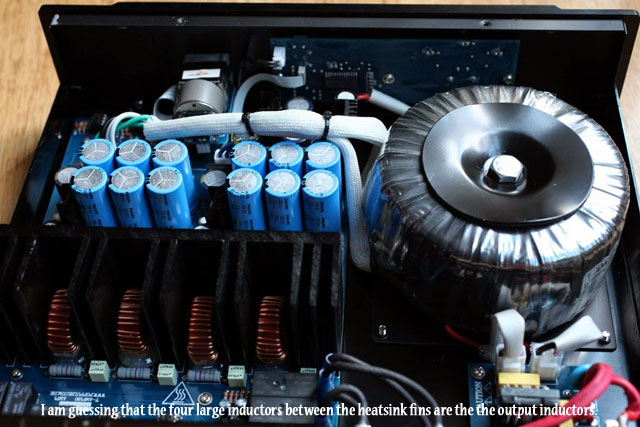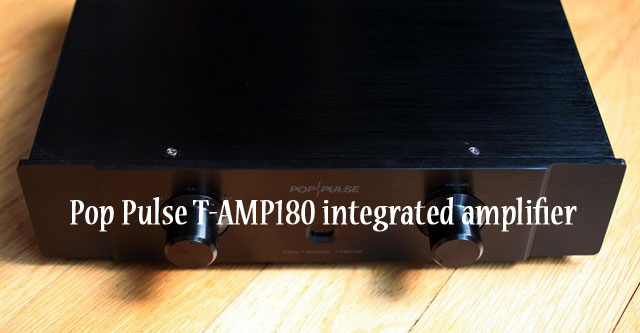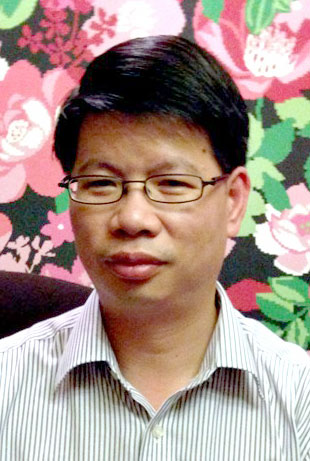The black aluminium face plate sports two identical knobs, one for selecting input (via a spring loaded knob), and the other for controlling the volume. A small plastic remote control is provided.
Turning to the rear panel reveals 3 pairs of line level inputs (one of which is 3 pin XLR balanced inputs), WBT style binding posts, an IEC mains inlet, and a rocker mains switch.

The T-180 is based on 2 x Tripath TA2022 chips, which have been bridged to deliver higher output power. Claimed power output is 120 watts into 8 ohm loads, and 180 watts into 4 ohm loads (specified at 0.1 % THD). There is no free lunch in this world, and bridged operation will result in the amplifier seeing half the actual load. Although the Tripath datasheets do not advise outright against low impedance loads, they do warn that amplifier efficiency will be reduced and that the current limiting may be prematurely triggered under such conditions.
Parts quality is good with a 4 channel motorized Alps pot controlling volume, LME 49720 op amps in the preamp section, and Philips, Panasonic FC and Nichicon Fine Gold electrolytic capacitors spotted throughout the circuit. The circuit design is claimed to be fully balanced, which would explain the 4 channel pot. Lastly, a large toroidal transformer is used in the power supply.

One interesting feature is the ability to “bypass” the preamplifier section by moving two switches internally. The volume control remains in the signal path and you are supposed to turn the volume control to maximum. This allows you to pair the T-180 with an external preamp, or DAC with volume control.
The LME 49720 chips are mounted onto sockets, so you could tune the T-180 to taste by using other compatible opamps.
Ergonomically, I think the location of the power switch is less than desirable. Apart from the rocker switch being quite small and difficult to feel for, it was blocked by my left speaker cables that were connected to the binding posts via spade terminations.
I also found the gain quite high, with very little range for adjustment on the volume knob, especially when using the balanced input.
Other than that, operation is quite hassle free. The T-180 thoughtfully remembers your last input, and resets the motorised volume back to zero each time you switch on the machine. Yes, it is a hassle if you are using the T-180 as a power amp, but it sure beats blasting your system to bits.
Sound Quality
Most of my prior experience with Class-T equipped amps have been with the TA2024 chip which is a low powered design. My memories of it – nice, smooth and warm sounding.
The T-180 was therefore quite a shock during listening tests. It has a neutral balance with a very clean and open mid-band. If you are looking for a euphonic and cuddly amp, this is certainly not one of them.
(Via balanced inputs)
Bass authority was very good, with a tight grip. There was really nice speed here which contributed to a fast and tuneful presentation. A relatively moderate amount of mid-bass bloom meant that the T-180 had a slightly full bass with good weight.
Midrange had good clarity and a slight sweetness. Vocals were grain-free and easy to listen to for extended periods of time.
Treble is good and evenly balanced compared to the rest of the frequencies.
Resolution is well above average, with good retrieval of microdetails. However, a slight reduction of air made percussion work a little bit more closed-in than I am used to.
On the staging front, the T-180 had reasonable depth and width, but presentation had less three dimensionality. Compared to the Job 225, the T-180 had flatter perspectives.
Control over busy mixes was also good with adequate separation between instrument lines.
(via single ended inputs)
The T-180 sounds much brighter through it’s single ended inputs. You get a livelier sound, with a trade-off in separation, microdetail and a flatter soundstage. I ended up listening to the T-180 during most of the evaluation period through it’s balanced inputs ,which I preferred.
(with an external preamp)
I also tried driving the T-180 directly through the volume control of my Antelope Zodiac Gold DAC. The Antelope has a very high quality volume control, with attenuation controlled via a relay activated resistor network. I preferred using the the T-180’s internal preamp circuit for better soundstage depth and more dynamics and drive. You could say that this is a testament to the quality of the T-180’s line stage. Although the result was not as expected, it is a nice option to have.
Conclusion
I was very impressed with the T-180 in the one month I had it with me. You get very competent performance and generous amounts of power – all for a modest price tag.
I would exercise some caution in matching the T-180 with bright sounding equipment. Apart from that, the T-180 is highly recommended.
The T-180 is available in Singapore from
Horizon Acoustics
144 Upper Bukit Timah Road
#03-15 Beauty World Centre
Singapore 588177
Horizon Acoustics is offering the T-180 for an introductory price of S$ 650 at the time of writing.
A word of thanks to Mr. K.M. Poon of Horizon Acoustics for supplying the review unit.




Eric also publishes his own blogspot out of Singapore entitled Eric’s Hifi Blogs (http://singaporehifi.blogspot.com/)







Be the first to comment on: Pop Pulse T-AMP180 integrated amplifier